Bhutan Valleys on Bhutan Tourist Map

Check more Maps of Bhutan in Bhutan Tourist Maps.
Phobjikha Valley: Bhutan's Serene Natural Retreat
Phobjikha Valley is known one of the most beautiful and beloved valleys in Bhutan. With its vast landscapes, charming black-necked cranes, and the engaging Gangtey Nature Trail, it's a place where visitors can truly feel time slow down and their spirits lift. Hiking is the most popular way to explore the valley.
Gangtey Monastery
Gangtey Monastery, situated at the top of Phobjikha Valley, is one of the two main centers of the Nyingma sect (Red Sect) of Tibetan Buddhism in Bhutan. The monastery itself is considered the most exquisite temple in Bhutan. With its four-story building, it stands in stark contrast to the monasteries of Paro and Thimphu. The monastery also hosts the grand Chukha (Prayer) Festival annually in October-November.
For breathtaking views of the valley, a stay at the hilltop Gangtey Monastery is recommended.
Black-Necked Crane
The valley's absolute highlight is the black-necked crane, a rare and treasured species with only about 10,000 individuals worldwide. The locals have established a conservation center in Phobjikha Valley and celebrate the Black-Necked Crane Festival every December. Visitors are advised to bring binoculars to observe these graceful creatures, especially during the winter months from November to February.


Gangtey Nature Trail
The Gangtey Nature Trail is a popular route for exploring Phobjikha Valley. This 5-kilometer (3.1 miles) trail starts from the north of Gangtey Monastery and extends to Khewang Village, passing through paddy fields, traditional farmhouses, and potato plantations. It usually takes around 1.5 to 2 hours to complete and is suitable for most visitors, including families.
How to Travel Phobjikha Valley
Plan for a full day to explore the valley's main attractions, including Gangtey Monastery and the Black-Necked Crane Conservation Center. If time allows, the Gangtey Nature Trail is a rewarding experience.
How to Get to Phobjikha Valley
Located in central Bhutan in the Wangdue Phodrang region, the valley is about 70 km from Punakha, roughly a 2-hour drive. It can be easily accessed via the Punakha-Thimphu highway and the Nobding-Wangdue highway.
Punakha Valley: Pleasantness Meets Happiness
Punakha Valley is one of Bhutan's most picturesque valleys. The Pho Chhu and Mo Chhu rivers flow through the lush valley, and the higher temperatures during winter make it a popular retreat for locals and visitors alike. It is also home to one of Bhutan's most important dzongs, the Punakha Dzong.

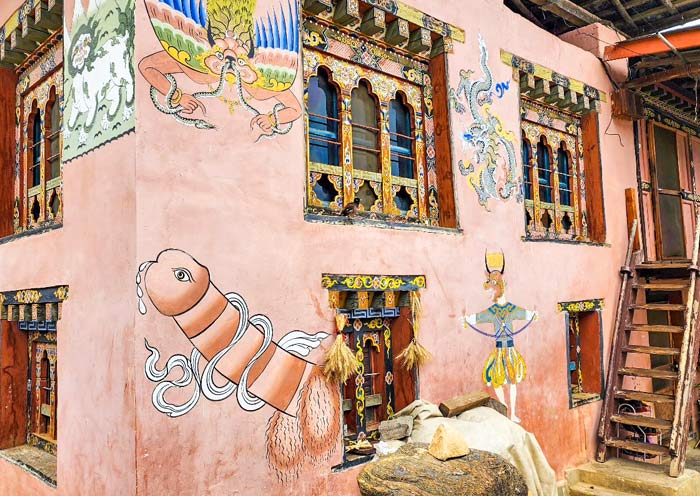
Punakha Dzong
Punakha Dzong, which translates to "the palace of great happiness or bliss," is situated at the confluence of the Pho Chhu and Mo Chhu rivers. The dzong has served as the seat of Bhutan's government, and all kings have been crowned here, symbolizing the royal heritage. The wedding of the current, fifth King and Queen also took place here. Today, it has also become a romantic destination for honeymooners. In May, when the jacarandas bloom, their purple blossoms transform the Punakha Dzong into a dreamlike paradise.
Chimi Lhakhang
Chimi Lhakhang is a temple dedicated to the "Divine Madman," where the phallus is a revered symbol. This fertility temple is nestled among the hills, and childless couples often visit to seek blessings.
Punakha River Rafting
The abundant river waters turn Punakha Valley into a playground for adventurers. Consider trying a 1-2 hour white-water rafting experience, flowing down the river for a unique perspective of the majestic Punakha Dzong.
Plan a Visit in Punakha Valley
Punakha Valley is a classic destination in Bhutan that typically requires about a day to explore its highlights, including Punakha Dzong and Chimi Lhakhang. If you're an adventurer, remember to allocate some time for river rafting and enjoy the thrill it offers.
Getting to Punakha Valley: Punakha is around 3 hours’ drive from Thimphu, with the journey itself being scenic, including the dramatic pass over the Dochu La with its 108 chortens and sweeping views of the Himalayas. The valley is well-connected by the well-maintained roads of Bhutan, making it an accessible and essential part of any Bhutanese adventure.
Key transportation information:


Paro Valley: An important land of abundance in Bhutan
Paro Valley is a prosperous and fertile valley that you cannot skip on your trip to Bhutan. It serves as a gateway for most tourists since the Paro Airport is located here. The iconic Tiger's Nest Monastery and the magnificent Rinpung Dzong should be the highlights of your visit to Paro Valley.
Tiger's Nest Monastery
The iconic Tiger's Nest Monastery is perched on the edge of a cliff, approximately 900 meters above the valley floor. It is synonymous with Bhutan and is even considered a symbol of the entire Himalayan region. It takes around 3 hours to reach the monastery by following the trail. Trek to Tiger's Nest Monastery
Rinpung Dzong
The magnificent Rinpung Dzong offers a commanding view of the valley. This fortress is known as the "Fortress on a Heap of Jewels" and houses sacred Buddhist relics. Every spring(March), the vibrant Paro Tsechu festival takes place, featuring colorful celebrations and lively dances.

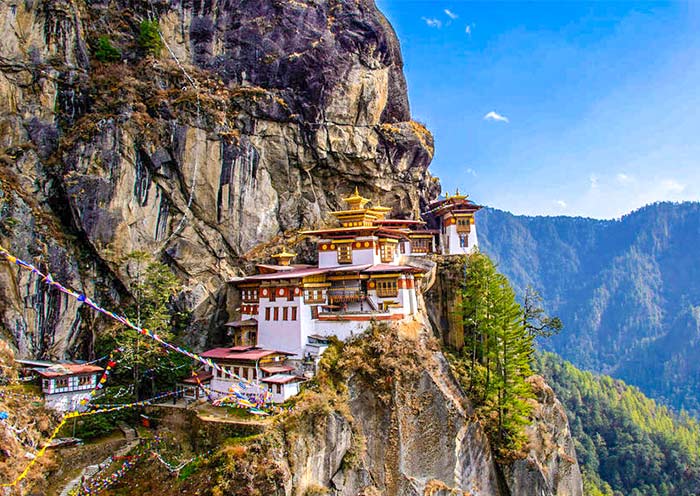
How to Plan a Bhutan Paro Valley Tour
The renowned Tiger's Nest Monastery deserves a full day of exploration. If you also wish to visit other major attractions in Paro Valley, you will need to plan around 0.5-1 additional day.
Getting to Paro Valley: Paro Valley is undoubtedly the transportation hub of Bhutan. It takes about 10 minutes to drive from Paro Airport to Paro Town, covering a distance of approximately 3.4 kilometers. It is located around 50 kilometers from the capital, Thimphu, which takes about 1.5 hours by road.
Thimphu Valley: Where Bhutan's Capital is Located
Located in western Bhutan, Thimphu Valley is home to the nation's capital, Thimphu, and is one of the most famous tourist destinations in the country. The charming town stretches along the valley, presenting a stark contrast with modern buildings and traditional temples within the city, and majestic natural scenery on the outskirts.
Thimphu City
Thimphu, the capital of Bhutan, is home to about one-seventh of the country's population and is known for its absence of traffic lights, still utilizing traditional traffic police booths instead. The city invites visitors to explore its fully organic weekend market, offering an insight into the everyday life of the Bhutanese people.


Tashichho Dzong
At the heart of the Thimphu Valley is Tashichho Dzong, a stunning fortress that houses the King's throne room and offices, as well as the secretariat, and the ministries of home affairs and finance. This impressive architectural feat is also the venue for the vibrant annual Thimphu Tsechu festival in the fall, featuring masked dances and cultural performances.
Buddha Dordenma
Another focal point in Thimphu is the Buddha Dordenma, a 51-meter tall statue of Shakyamuni Buddha that sits atop a hill in the valley. A climb to this site offers panoramic views of the entire city of Thimphu.
Planning Your Visit in Thimphu Valley
Exploring the cultural sites can be done comfortably within a day. However, to fully appreciate the city's offerings, including the markets and natural preserves, it's best to allocate an additional day or two.
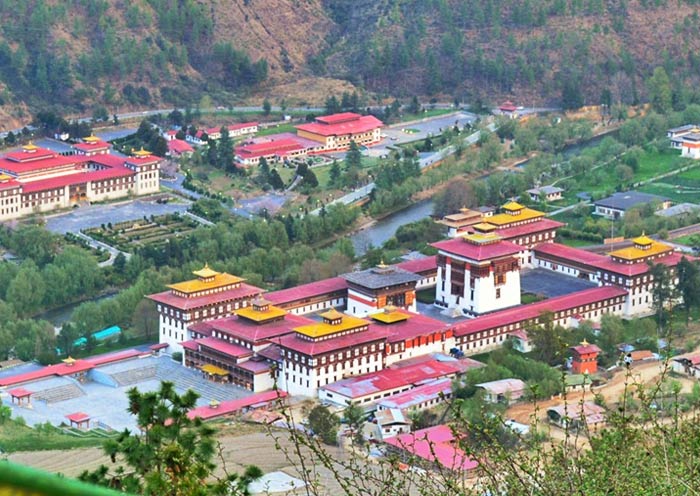

Getting to Thimphu Valley
Thimphu Valley is easily accessible via the national highway from Paro, which takes ca. 1.5 hours by road. The journey offers scenic views as it winds along the rivers and through the mountains, making the travel itself a part of the Thimphu experience.
Bumtang Valley: Bhutan's Cultural and Spiritual Sanctuary
Bumthang is a beautiful and sacred valley located in the eastern part of Bhutan, often referred to as the spiritual heartland of the country. It is renowned for its numerous easy hiking trails, such as the Bumthang Owl Trek and Bumthang Cultural Trek.
The valley is divided into four main regions: Chokhor, Tang, Ura, and Chhume, each with its own unique culture and natural beauty.
Jakar Dzong, with its commanding view, is a major highlight of Chokhor. The Chokhor Valley is commonly referred to as Bumthang itself and is home to many important temples and monasteries, including Kurje Lhakhang and Tamshing Lhakhang. Mebar Tsho, the Burning Lake, is one of the most sacred sites in Bhutan and is located in the Tang region.
Furthermore, Bumthang's cottage industries and vast sheep farms, including the famous Bumthang cheese and Red Panda beer, add a delightful flavor to the visit.

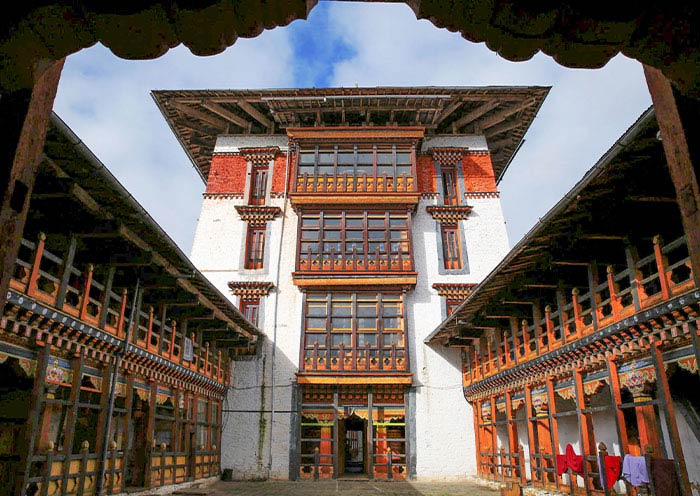
Planning Your Visit in Bumthang Valley
Taking into account the distance from Paro or Thimphu to reach Bumthang, you would need additional travel time on the road. Exploring the main attractions of Bumthang would require approximately a day to be allocated. If you are an avid hiker, both the Bumthang Owl Trek and Bumthang Cultural Trek would take about 3 days to complete.
How to Get to Bumtang Valley
Bumthang Valley can be reached by road from Thimphu, the capital city of Bhutan. The distance between Thimphu and Bumthang is ca.268 kilometers and takes around 10 hours to reach by car.
Haa Valley: Discovering the Hidden Gem of Bhutan
Many times, this picturesque valley located in western Bhutan remains hidden, attracting only the most adventurous travelers. This secluded paradise has recently opened its doors to tourists.
The Haa Valley is characterized by terraced fields, pristine alpine forests, serene mountain peaks, and the traditional and unchanged nomadic way of life, making it one of the most soothing experiences you may encounter while exploring the valleys of Bhutan. The Haa Valley hosts summer festivals annually, showcasing their unique way of life and culture.


Within the valley, you will find two ancient temples: Lhakhang Karpo (White Temple) and Lhakhang Nagpo (Black Temple). Legend has it that a white and black pigeon was released to choose the locations for these temples, adding a mysterious aura to their existence.
Here are some tips for visiting Haa Valley:
- Paro, located about 68 kilometers away, serves as the transportation hub for reaching Haa Valley.
- The Chele La Pass separates Paro and Haa Valley and serves as the main checkpoint when traveling from Paro to Haa.
- The pristine Haa Valley is worth exploring for about a day.
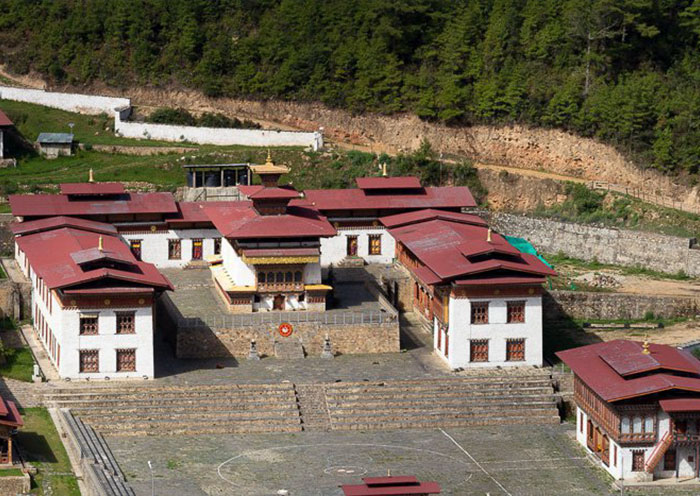

Trongsa Valley: The Heart of Bhutanese History and Tradition
Perched in the central heartland of Bhutan, Trongsa Valley presents a stunning tableau of Bhutanese heritage and topography. With its strategic location, Trongsa has historically been the seat of power of the Wangchuck dynasty and serves as a vital link between the eastern and western regions of the country.
Dominating the landscape is the majestic Trongsa Dzong, a fortress that appears to grow out of the steep mountainside. Known as the most impressive dzong in Bhutan, it is a labyrinth of temples, corridors, and offices, holding a commanding view over the deep valleys below. The dzong also houses a museum that offers insights into the rich history of the kingdom and the Wangchuck dynasty.
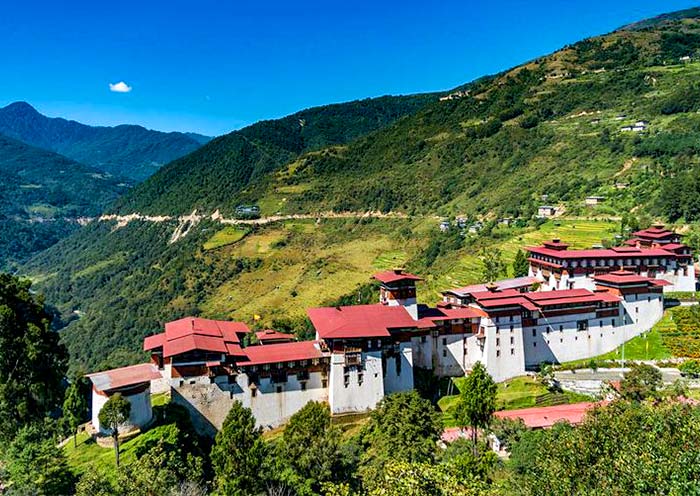

How to Plan A Bhutan Valley Trip
Just exploring one or two impressive valleys in Bhutan may not satisfy the appetite of travelers. You can plan your tour in the Bhutanese valleys based on your available travel time.
Short Trip (4-5 days): For a classic short trip, the Thimphu Valley becomes your preferred destination due to the charming town of Thimphu, and the iconic Tiger's Nest Monastery in the Paro Valley.
Mid-length Trip (6-8 days): Punakha is an irresistible destination in Bhutan that you shouldn't miss if your vacation allows. Explore the charm of the Punakha Dzong. A 6-8 day itinerary can also extend to the Phobjikha Valley, renowned for its natural ecology, where you can enjoy the fresh oxygen-rich air and encounter precious wildlife.
Long Trip (8-12 days): The Haa Valley and Bumthang Valley will become the extended destinations for your Bhutanese valley tour. Discover the hidden pleasures of pristine valleys and experience natural adventures with light trekking.
Explore Bhutan with Local-based Asia Odyssey Travel


Asia Odyssey Travel is a local-based travel agency that offers Bhutan Group Tours and customized tours in Bhutan. Our team of experienced local guides ensures that you have an immersive and insightful journey, sharing our deep understanding of Bhutanese culture, history, and spirituality.
Bhutan, known as the "Land of the Thunder Dragon," is a captivating destination with its stunning landscapes, ancient monasteries, and rich Buddhist traditions. Asia Odyssey Travel can help you discover the highlights of Bhutan, including Paro, Punakha, Thimphu, Bumthang, and Gangtey.
Whether you're interested in trekking through pristine mountain trails, participating in vibrant festivals, or exploring remote villages, Asia Odyssey Travel can tailor Bhutan Trekking Tour and Bhutan Festival Tour itineraries to suit your preferences.
Embark on a memorable journey through Bhutan with Asia Odyssey Travel and immerse yourself in the enchanting beauty and traditions of this unique Himalayan kingdom.
For useful links when planning a trip to Bhutan, click here:
Bhutan Travel Tips:
How to Visit Bhutan: How to Plan a Trip to Bhutan?
The Cost of Traveling in Bhutan
Bhutan Hotels: Unlock Happiness During Your Stay in Bhutan
Visa & SDF in Bhutan:
Bhutan Visa: Requirements, Price, Policy 2024
Bhutan Tourist Tax: Bhutan's SDF Fee Promoting Happiness
Bhutan Travel Restrictions: Bhutan Travel Rules
Bhutan Attractions:
10 Best Places to Visit in Bhutan
20 Best Things to Do in Bhutan
Top 7 Valleys in Bhutan to Visit
Top 10 Thimphu Tourist Places to Visit
Transportation Tips:
Flights to Bhutan: How to Fly to Bhutan
Bhutan Airports: Paro Airport & List of Airport in Bhutan
How to Travel to Bhutan from USA
How to Get to Bhutan from Singapore
How to Get to Bhutan from Nepal
How to Travel from Bangkok(Thailand) to Bhutan
How to Travel to Bhutan from India
If you have any questions about this article, please contact us by submitting the following form and we'll immediately get back to you.












